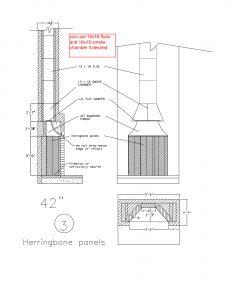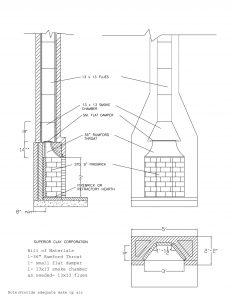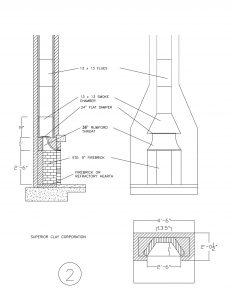The Rumford fireplace created a sensation in London when he introduced the idea of restricting the chimney opening to increase the updraft. He and his workers changed fireplaces by inserting bricks into the hearth to make the side walls angled, and they added a choke to the chimney to create a circulation of air inside the chimney. In the unmodified chimney, smoke rises up the chimney propelled only by buoyancy — the heated gases from the fireplace being lighter than the surrounding air. This is especially ineffective when the fire is first lit, and the temperature and density of the smoke are closer to the ambient air. Thanks to the discontinuity produced by Rumford’s brick “smoke shelf”, the flow of smoke gases up the chimney became detached from the outside wall at the lip of the shelf. This set up a counter-circulation of outside air which flowed down the backside of the chimney, while a mixture of outside air and smoke flowed up the opposite side. The circulation inside the chimney, and above the smoke shelf, created a dynamic pressure in which the smoke gases were driven up one side of the chimney and cold air was pulled down the other. The air mixed with the rising smoke and increased the combined flow rising up the flue. It produced a circulating air-smoke flow, driving the smoke up into the chimney rather than lingering and often choking the residents. Many fashionable London houses were modified to his instructions and became smoke-free as well as more efficient. Thompson became a celebrity when news of his success became widespread. In an age when fires were the principal source of heat, this simple alteration in the design of fireplaces was copied widely.








